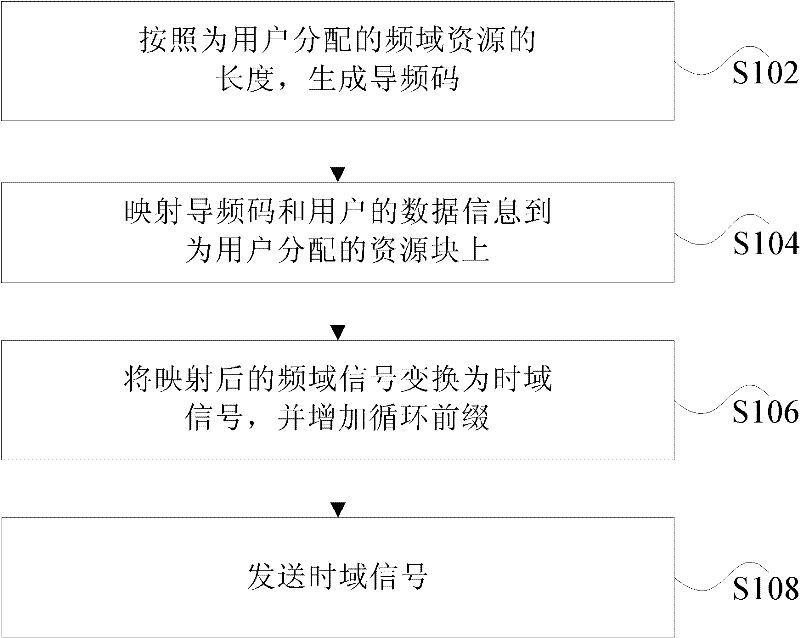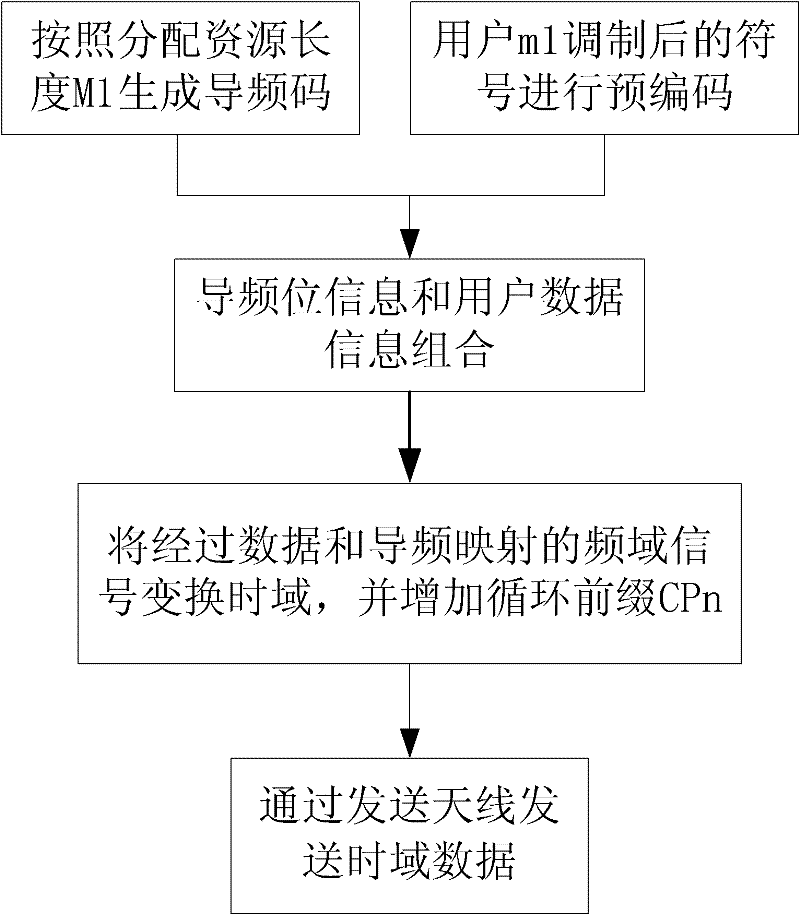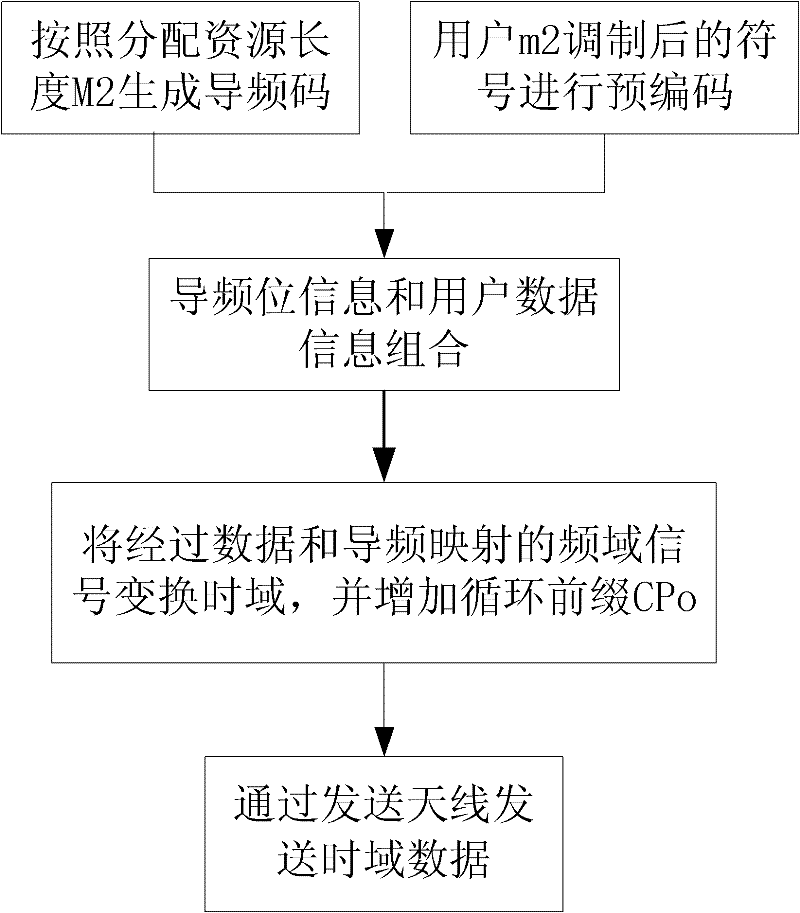Signal processing method, device and system
A signal processing device and signal processing technology, applied in the field of communication, can solve problems such as ultra-long-distance difficulty in correct demodulation
- Summary
- Abstract
- Description
- Claims
- Application Information
AI Technical Summary
Problems solved by technology
Method used
Image
Examples
Embodiment 1
[0051] figure 2 is a flow chart of the signal processing method according to the preferred embodiment 1 of the present invention.
[0052] At the sending end, according to the resource allocation status of the target user, for user m1, a pilot code of the allocated resource length (M1) is generated. The generation of the pilot code can refer to the generation method of the Zadoff-Chu code in the 3Gpp protocol TS 36.211. The generated pilot code with a length of M1 is sent to the resource mapping module.
[0053] Precode the modulated symbols of the user, do the discrete Fourier transform of point M1, and send them to the resource mapping module together with the generated pilot code sequence, where the number of modulated data symbols generated is M1×(N symbol -2×C) / p, 2×C is the number of OFDM symbols not used to transmit user data information, preferably, C=3.
[0054] User m1 is mapped to some OFDM symbols in a subframe, pilot bit information and user data information ar...
Embodiment 2
[0057] image 3 is a flow chart of the signal processing method according to the preferred embodiment 2 of the present invention.
[0058] For user m2 (existing system user), generate the pilot code of the allocated resource length (M2), the generation of the pilot code can refer to the generation method of Zadoff-Chu code in the 3Gpp protocol TS 36.211, and the generated length is M2 The pilot codes are sent to the resource mapping module.
[0059] Precode the modulated symbols of the user, do the discrete Fourier transform of M2 points, and send them to the resource mapping module together with the generated pilot code sequence, where the number of modulated data symbols generated is M2×(N symbol -2), in the existing LTE protocol, for the conventional CP, N symbol =14, for extended CP, N symbol =12.
[0060] Figure 4 It is a schematic diagram of adding cyclic prefix in the time domain of the system transmitter according to the preferred embodiment 2 of the present inve...
Embodiment 3
[0074] Figure 7 is a flow chart of the signal processing method according to the third preferred embodiment of the present invention.
[0075] At the receiving end, the data received by the transmitting end through the wireless channel is calculated according to the N symbol OFDM symbols and increased cyclic prefix length CP 1 Remove the cyclic prefix of received data.
[0076] Perform N-point Fourier transform of the time-domain signal after cyclic prefix removal to the frequency domain.
[0077] According to the frequency domain resource positions mapped by user m1 and user m2 and the positions of data symbols, respectively, extract the received pilot information and user data information of ultra-long coverage users and extract the received pilot information and user data information of regular users;
[0078] Then do channel estimation, perform channel estimation of the pilot bits according to the received pilot information and local pilot information, and calculate th...
PUM
 Login to View More
Login to View More Abstract
Description
Claims
Application Information
 Login to View More
Login to View More - R&D
- Intellectual Property
- Life Sciences
- Materials
- Tech Scout
- Unparalleled Data Quality
- Higher Quality Content
- 60% Fewer Hallucinations
Browse by: Latest US Patents, China's latest patents, Technical Efficacy Thesaurus, Application Domain, Technology Topic, Popular Technical Reports.
© 2025 PatSnap. All rights reserved.Legal|Privacy policy|Modern Slavery Act Transparency Statement|Sitemap|About US| Contact US: help@patsnap.com



